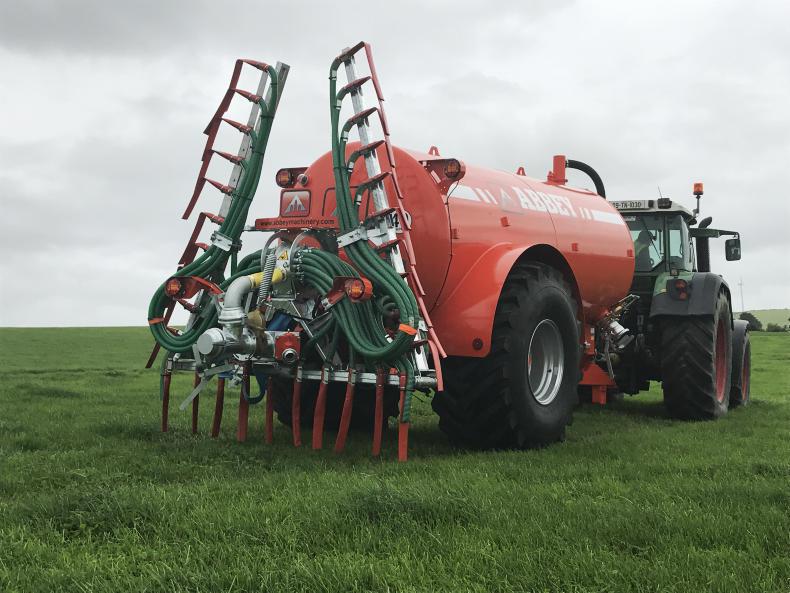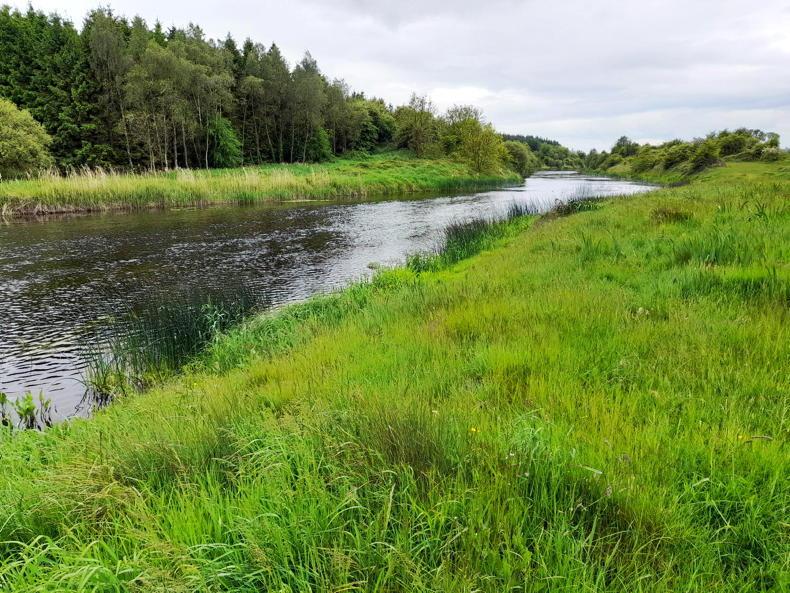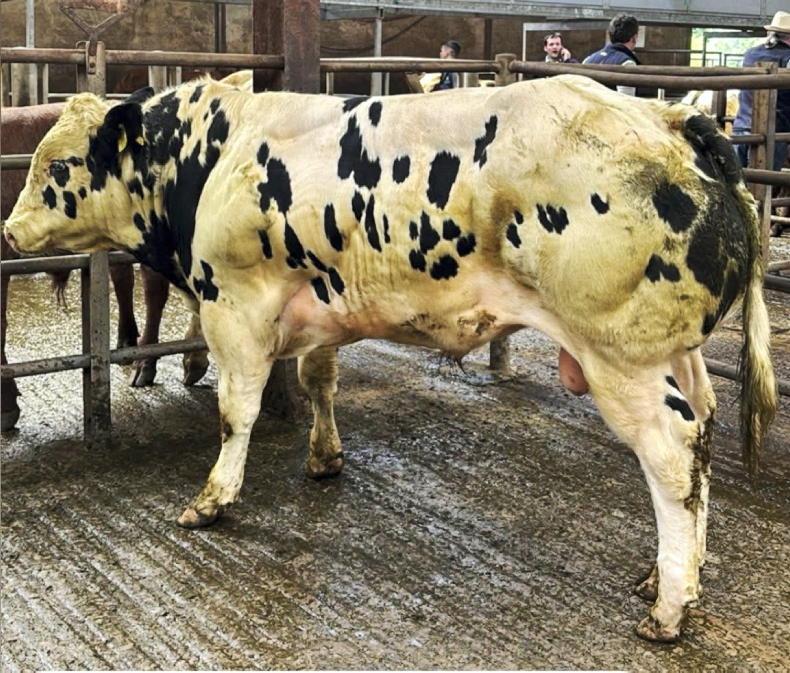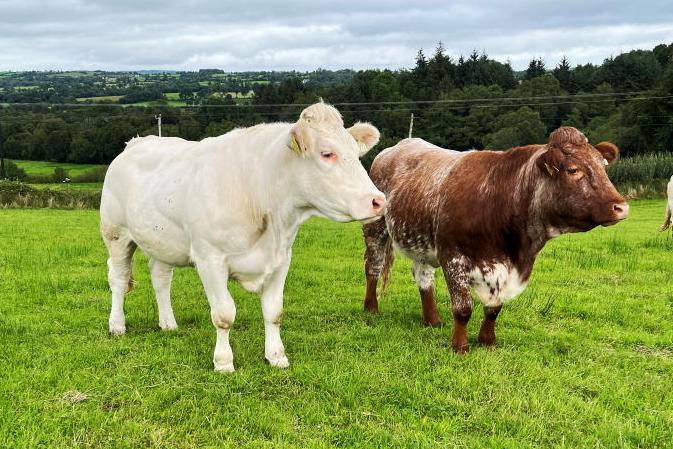Before buying fertiliser and hooking on the tanker when the slurry spreading period opens, take the time to plan out which fields to target with urea, CAN, compound fertiliser and slurry.
Rather than just spreading slurry on the driest fields or those closest to the yard, targeting slurry to silage fields or grazing ground which is low in phosphate (P) and potash (K) will result in higher spring grass growth.
Outlined are five steps to planning out fertiliser applications in early spring.
1 Soil test
If you haven’t tested soils in the last four years, then it is time to sample fields again. Sampling now before applying fertiliser, slurry and farmyard manure will give a more accurate reflection of soil fertility levels.
2 Soil temperatures
Once soil temperature increase above 5°C, the grass plant will start to grow. Therefore, there is little benefit in applying fertiliser until soil temperatures rise, as nitrogen uptake will be low, meaning there is a greater risk of nutrient loss.
3 Target slurry to fields low in P and K
P and K are just as important for grass growth as nitrogen. Therefore, fields that are below index 2 for P and K should be targeted with slurry this spring.
Applying 2,000 to 3,000 gallons/acre on silage ground will replace some of the P and K offtake in forage last year, helping to kickstart growth and boost yields later in spring.
However, be careful not to graze fields with lactating cows after slurry, as there is an increased risk of tetany.
Where slurry is limited on farm or there is too big a distance to haul, then opt for a compound NPK fertiliser.
While they are dearer per tonne than straight CAN, the price difference is smaller on a per-bag basis.
For example, CAN at €250/t costs €12.50 per bag, while 18:6:12 at €300/t costs €15/bag, yet the P and K applied to low fertility soils will result in higher grass growth.
4 Gauge grass covers before applying fertiliser
For fields with a heavy cover of grass, the sward should be grazed before applying fertiliser. Once grazed, grass growth will kickstart, so the fertiliser will be more effective when applied to an actively growing plant.
For swards with medium grass covers between toe and ankle height, bagged fertiliser is the best product to apply.
Slurry is best applied to bare fields or swards below toe height. These fields are unlikely to be grazed for a good three to four weeks after spreading. This time period reduces the risk of tetany in cows and increases grass utilisation.
5 Lime and urea
On grass swards below pH 6.0, lime should be applied. If not, soil nutrients will start to be locked up and unavailable for grass growth.
However, if applying lime to grassland this spring, do not apply on fields where urea has been or will be applied. After liming ground, use CAN or a compound fertiliser throughout spring.
If you are applying urea this spring, do so on a dull day and avoid frosty weather to maximise nitrogen uptake.
Read more
Global meat production decline continues – Rabobank
Mart prices: bullocks off to a good start in Ennis
Before buying fertiliser and hooking on the tanker when the slurry spreading period opens, take the time to plan out which fields to target with urea, CAN, compound fertiliser and slurry.
Rather than just spreading slurry on the driest fields or those closest to the yard, targeting slurry to silage fields or grazing ground which is low in phosphate (P) and potash (K) will result in higher spring grass growth.
Outlined are five steps to planning out fertiliser applications in early spring.
1 Soil test
If you haven’t tested soils in the last four years, then it is time to sample fields again. Sampling now before applying fertiliser, slurry and farmyard manure will give a more accurate reflection of soil fertility levels.
2 Soil temperatures
Once soil temperature increase above 5°C, the grass plant will start to grow. Therefore, there is little benefit in applying fertiliser until soil temperatures rise, as nitrogen uptake will be low, meaning there is a greater risk of nutrient loss.
3 Target slurry to fields low in P and K
P and K are just as important for grass growth as nitrogen. Therefore, fields that are below index 2 for P and K should be targeted with slurry this spring.
Applying 2,000 to 3,000 gallons/acre on silage ground will replace some of the P and K offtake in forage last year, helping to kickstart growth and boost yields later in spring.
However, be careful not to graze fields with lactating cows after slurry, as there is an increased risk of tetany.
Where slurry is limited on farm or there is too big a distance to haul, then opt for a compound NPK fertiliser.
While they are dearer per tonne than straight CAN, the price difference is smaller on a per-bag basis.
For example, CAN at €250/t costs €12.50 per bag, while 18:6:12 at €300/t costs €15/bag, yet the P and K applied to low fertility soils will result in higher grass growth.
4 Gauge grass covers before applying fertiliser
For fields with a heavy cover of grass, the sward should be grazed before applying fertiliser. Once grazed, grass growth will kickstart, so the fertiliser will be more effective when applied to an actively growing plant.
For swards with medium grass covers between toe and ankle height, bagged fertiliser is the best product to apply.
Slurry is best applied to bare fields or swards below toe height. These fields are unlikely to be grazed for a good three to four weeks after spreading. This time period reduces the risk of tetany in cows and increases grass utilisation.
5 Lime and urea
On grass swards below pH 6.0, lime should be applied. If not, soil nutrients will start to be locked up and unavailable for grass growth.
However, if applying lime to grassland this spring, do not apply on fields where urea has been or will be applied. After liming ground, use CAN or a compound fertiliser throughout spring.
If you are applying urea this spring, do so on a dull day and avoid frosty weather to maximise nitrogen uptake.
Read more
Global meat production decline continues – Rabobank
Mart prices: bullocks off to a good start in Ennis










SHARING OPTIONS